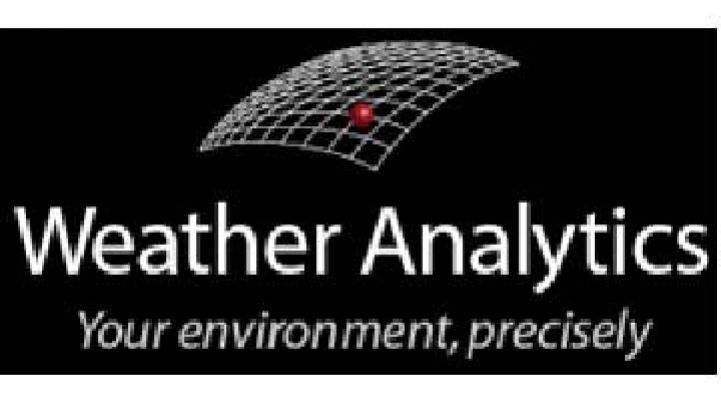Like water, weather is inextricable from energy extraction and use. Also like water, innovation in weather data is long overdue.
From when the wind will blow past turbines to the best way to benchmark energy efficiency in buildings, clear and accurate weather information data is a must for energy generation and consumption. Despite the needs of everyone from grid operators to business owners, there are only about 4,000 weather stations in the world, mostly at universities and airports, which has lead to a lot of extrapolation over the years.
“If you focused it, you could do some amazing things for energy management,” said Chuck Khuen, Principal at Weather Analytics, a new company that is looking to provide the sort of sophisticated information that various sectors are looking for.
There are two flavors of weather information, the kind that comes from those ground stations and modeled forecast data that uses historical data. Both are needed for the most precise applications, like the examples given above. Integrating the two sounds like a no-brainer, but it’s not, according Khuen. “It is not trivial to integrate the ground station and the modeled forecast data,” he said. “If you get weather data, it’s pretty raw.”
Weather Analytics takes all of that raw data and focuses it for hundreds of thousands of sites. The company’s platform can offer precise data on any location on the globe and can be customized for any application and integrate any private sensors into the application. “We have a concept of building your own weather app,” said Khuen.
Sizing up HVAC
Weather Analytics is currently focused on building modeling and energy management, although Khuen said that the company has had fielded calls from everyone from insurance companies to farms.
For new construction, building engineers take weather into account to size the HVAC. Khuen said most firms look at typical meteorological year files, commonly called TMY files, which look at about 30 years of data and pick the most typical months. “It’s fine to rough-size an HVAC system, but when you’re trying to manage a building to be energy efficient, you don’t want extra capacity, but you also don’t want to undercut it,” he said.
The world is already moving towards more accurate data; smart meters are providing up to 15-minute interval data and building management is moving towards real time. But even if you can find accurate historical data and match it up with historical utility bills, “good luck getting solar radiation data” from a traditional weather service, said Khuen.
Khuen estimated that there’s a 10 percent savings to be gained from correctly sizing an HVAC using more sophisticated weather data, and potentially more depending on the design of the building and how it interacts with its external environment.
A Step Up on TMY
Currently, TMY files are available from the U.S. Department of Energy. “It’s hard to compete with free,” says Khuen. But Weather Analytics can offer files that show year-to-year variation, which the DOE files do not. Also, there are only 500 weather stations outside of the U.S. and Europe, so the company sees itself well positioned to compete in emerging markets where there are huge holes in weather data offerings.
While TMY files may be free, Weather Analytics’ system offers more than just files. Also, for companies that already get ground weather data, Khuen said it is often incomplete and not that clean. The Winchester, Mass.-based company not only fills in the gaps using algorithms, but its Sensor Point technology can also be tailored to present whatever information is the most relevant. He noted that it’s not just temperature and wind that Weather Analytics takes into account; a total of about 500 variables, including soil temperature and downward radiation, are covered in the platform.
The privately held company is still in business development, and has spent the past five years crunching data to produce the more than 30 years of consistent hourly weather data from around the world that it offers its customers. Five years from now, Khuen expects to have the software embedded in energy monitoring equipment offered by partners.
Incorporating weather data is becoming more common. Ecofactor uses complex algorithms to bring different data points, including weather, into a software-as-a-service product offered in the home energy management space. BuildingIQ also uses weather in the commercial space. Weather Analytics is focusing on buildings to start, but plans to "do what Ecofactor does for the whole world,” said Khuen, noting that, once the company is off the ground, they don’t see themselves as players in just the building management space.
“We’re positioned [to go] where the market is going,” he said.
WeatherBill, which recently changed its name to The Climate Corporation, is also working in this sector.



